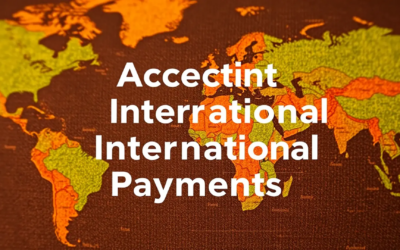Everything you need to know about merchant accounts for your business
A merchant account is more than just a bank account—it’s the gateway that allows businesses to accept payments from customers, particularly through credit and debit cards. In today’s fast-paced, digital-first world, offering customers multiple ways to pay isn’t just convenient; it’s essential. Without a merchant account, businesses might find themselves stuck in a cash-only era, which can seriously limit growth and reduce customer satisfaction.
What is a merchant account?
At its core, a merchant account is a specialized type of bank account that businesses use to process electronic payments. When a customer swipes, dips, or taps their card, the money doesn’t go directly into your business’s bank account. Instead, it passes through the merchant account first, acting as a middleman between your customer’s bank and your business’s bank.
The role of a merchant account
The main job of a merchant account is to ensure that electronic payments are handled securely and efficiently. This account is indispensable for businesses that want to offer their customers the flexibility to pay using credit cards, debit cards, or even digital wallets.
How does it work?
Here’s how it works: when a customer makes a payment, the transaction details are sent to the merchant account provider, who then contacts the customer’s bank to authorize the payment. If the bank gives the green light, the funds are transferred to the merchant account before eventually landing in your business’s main bank account. This process keeps everything running smoothly, allowing your business to accept payments from a broader range of customers, which can significantly boost your bottom line.
How payments flow through a merchant account
Step 1: Payment initiation
The journey begins when a customer decides to make a purchase. They might swipe, insert, or enter their card details into a payment terminal or online checkout page. This action triggers the payment process.
Step 2: Authorization request
Next, the payment terminal sends the transaction details to the merchant account provider. This provider then forwards these details to the customer’s bank, known as the issuing bank, requesting authorization to complete the transaction.
Step 3: Authorization response
The issuing bank now steps in to verify whether the customer has sufficient funds or available credit. If everything checks out, the bank sends an authorization code back to the merchant account provider, signaling that the transaction can proceed.
Step 4: Capture and settlement
Once the transaction is authorized, the merchant account provider captures the transaction. This means the details are stored and prepared for settlement. The provider then groups this transaction with others and sends them to the acquiring bank (the bank managing the merchant account) for settlement.
Step 5: Funds transfer
After settlement, the acquiring bank deposits the funds into your business’s merchant account. From there, the money is typically transferred to your regular business bank account within a few business days. This entire process, while complex, happens in just a few seconds, ensuring that you receive your money efficiently and securely.
Different types of merchant accounts: Which one is right for you?
Traditional merchant accounts
Traditional merchant accounts are the gold standard, typically offered directly by banks or specialized merchant service providers. They come with lower transaction fees, making them a cost-effective choice for businesses with steady sales volumes.
However, the trade-off is that these accounts often require a thorough application process and a long-term contract, which might not be ideal for every business.
High-risk merchant accounts
Certain businesses fall into what’s known as the high-risk category—industries like travel, gaming, or adult services are prime examples. These businesses are seen as having a higher risk due to the increased chances of chargebacks or fraud.
High-risk merchant accounts cater to these needs, though they come with higher fees and stricter terms. Despite the extra costs, these accounts are often the only viable option for businesses in these sectors.
Aggregated merchant accounts
If you’re a small business or startup, an aggregated merchant account might be more up your alley. Providers like PayPal, Stripe, or Square bundle multiple businesses under a single merchant account. This setup is easier and faster to implement, with fewer upfront costs. However, the convenience comes at a price—higher transaction fees and sometimes limited customer support.
Choosing the right merchant account
Your business’s specific needs—like transaction volume, industry risk, and desired features—will dictate which type of merchant account is the best fit. Small businesses might lean toward aggregated accounts for ease and simplicity, while larger, established companies might find traditional accounts more cost-effective in the long run.
How to set up a merchant account: A step-by-step guide
Step 1: Research and compare providers
Before diving in, take the time to research different merchant account providers. Look at factors like transaction fees, contract terms, customer support, and the payment methods they support. A little research now can save you headaches later.
Step 2: Prepare your business information
Once you’ve chosen a provider, you’ll need to gather the necessary information about your business. This typically includes your business name, address, tax identification number, and bank account details.
Financial statements and personal credit information may also be required, especially if you’re applying for a traditional or high-risk account.
Step 3: Submit an application
With everything in hand, you can now submit your application. This process usually involves filling out a form with the information you’ve gathered and agreeing to the provider’s terms and conditions. Make sure to review everything carefully before submitting.
Step 4: Undergo a risk assessment
The provider will evaluate your business’s risk level, which might include a credit check or an assessment of your business model and sales history. This step is crucial as it determines your eligibility and the fees you’ll be charged.
Step 5: Set up payment processing
After approval, the provider will guide you through integrating their payment processing system with your business, whether it’s an online store, physical POS system, or both.
Step 6: Start accepting payments
Once your setup is complete, you’re ready to start accepting payments through your new merchant account. Make sure to monitor transactions closely in the beginning to ensure everything runs smoothly.
What fees come with a merchant account?
When setting up a merchant account, it’s crucial to understand the various fees that can come with it. These fees can add up, so knowing what to expect can help you manage your costs more effectively.
The most common fees include transaction fees, monthly fees, and setup fees.
- Transaction fees are charged each time a customer makes a payment, usually as a percentage of the transaction amount plus a small fixed fee.
- Interchange fees are another key component; these are fees set by credit card networks like Visa or MasterCard and are paid by the merchant’s bank to the cardholder’s bank. They can vary depending on the type of card used and the nature of the transaction.
Avoiding hidden costs
Some providers might include hidden fees, such as early termination fees, statement fees, or PCI compliance fees. To avoid surprises, carefully review the contract terms and ask for a detailed breakdown of all potential charges.
Negotiating better rates
Don’t be afraid to negotiate. Larger businesses or those with high transaction volumes often have more leverage to secure lower rates. Comparing offers from different providers and understanding your business’s transaction patterns can also help you negotiate better terms. Ultimately, the goal is to find a balance between service quality and cost-effectiveness.
Merchant accounts: Weighing the pros and cons
Pros of merchant accounts
Merchant accounts offer several advantages that can help businesses thrive.
- First, they enable you to accept a wide range of payment methods, from credit and debit cards to mobile payments. This flexibility can significantly boost sales, as customers are more likely to make a purchase when they have multiple payment options.
- Additionally, merchant accounts improve customer satisfaction and trust as they provide secure and reliable payment processing.
- Finally, these accounts offer detailed transaction records, which can simplify financial management and make accounting more straightforward.
Cons to consider
However, there are some drawbacks to be aware of.
- Merchant accounts often come with various fees, including transaction, setup, and monthly maintenance fees. These can add up over time and eat into your profits, especially if you’re a small business.
- Another concern is the risk of chargebacks and potential fraud, which can be costly and time-consuming to resolve.
- Additionally, many merchant account providers require long-term contracts, which can be challenging to exit if your business needs change.
Choosing the best merchant account for your business
Selecting the right merchant account for your business is a critical decision that can impact your operations and profitability.
Practical tips for choosing
Start by comparing fees, features, and customer support across different providers. Look for transparency in fee structures and ensure that the services offered align with your business needs. For example, if your business processes a high volume of transactions, a provider with lower transaction fees may be more beneficial.
Considering high-risk businesses
If your business falls into a high-risk category, such as e-commerce or travel, make sure to choose a provider experienced in handling high-risk accounts. They’ll offer the necessary support and protection to manage potential risks effectively.
The bottom line
Choosing the right merchant account is a crucial step for any business looking to thrive in today’s competitive market. By understanding the different types of accounts, weighing the pros and cons, exploring alternatives, and staying ahead of technological trends, you can make an informed decision that supports your business goals. Remember, the right merchant account can help streamline your payment processes, improve customer satisfaction, and ultimately drive your business’s success.
FAQs
Can I use a personal bank account instead of a merchant account for my business?
No, a personal bank account isn’t designed to handle business transactions or credit card payments. A merchant account is specifically set up to manage these types of payments securely and professionally.
How long does it take for funds to be deposited into my business account from a merchant account?
Typically, it takes 1-3 business days for the funds to be transferred from your merchant account to your business bank account. Some providers may offer quicker deposits, but it could come with additional fees.
Is a merchant account necessary for online businesses?
Yes, a merchant account is essential for online businesses to accept credit and debit card payments. It ensures secure processing of electronic transactions, which is critical for maintaining customer trust.
What happens if a customer disputes a charge (chargeback)?
If a customer disputes a charge, the funds can be temporarily withdrawn from your merchant account while the issue is investigated. If the chargeback is resolved in the customer’s favor, you may lose the funds plus a chargeback fee.
Can I switch merchant account providers easily?
Switching providers is possible, but it can be complicated by long-term contracts and early termination fees. It’s important to carefully review your current contract and compare new providers before making a switch.







